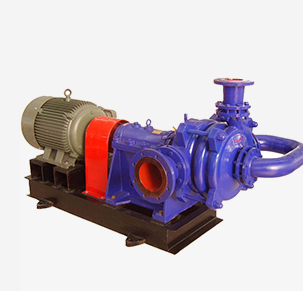Kyrgyz
- Afrikaans
- Albanian
- Amharic
- Arabic
- Armenian
- Azerbaijani
- Basque
- Belarusian
- Bengali
- Bosnian
- Bulgarian
- Catalan
- Cebuano
- Corsican
- Croatian
- Czech
- Danish
- Dutch
- English
- Esperanto
- Estonian
- Finnish
- French
- Frisian
- Galician
- Georgian
- German
- Greek
- Gujarati
- Haitian Creole
- hausa
- hawaiian
- Hebrew
- Hindi
- Miao
- Hungarian
- Icelandic
- igbo
- Indonesian
- irish
- Italian
- Japanese
- Javanese
- Kannada
- kazakh
- Khmer
- Rwandese
- Korean
- Kurdish
- Kyrgyz
- Lao
- Latin
- Latvian
- Lithuanian
- Luxembourgish
- Macedonian
- Malgashi
- Malay
- Malayalam
- Maltese
- Maori
- Marathi
- Mongolian
- Myanmar
- Nepali
- Norwegian
- Norwegian
- Occitan
- Pashto
- Persian
- Polish
- Portuguese
- Punjabi
- Romanian
- Russian
- Samoan
- Scottish Gaelic
- Serbian
- Sesotho
- Shona
- Sindhi
- Sinhala
- Slovak
- Slovenian
- Somali
- Spanish
- Sundanese
- Swahili
- Swedish
- Tagalog
- Tajik
- Tamil
- Tatar
- Telugu
- Thai
- Turkish
- Turkmen
- Ukrainian
- Urdu
- Uighur
- Uzbek
- Vietnamese
- Welsh
- Bantu
- Yiddish
- Yoruba
- Zulu
Telephone: +86 13120555503
Email: frank@cypump.com
Sep . 01, 2024 09:34 Back to list
Alternative 2 Inch Slurry Pump Options for Efficient and Reliable Performance
Alternative 2-Inch Slurry Pump Options for Efficient and Reliable Operations
When it comes to managing slurry in various industrial applications, selecting the right pump is crucial for ensuring operational efficiency and reliability. Among the options available in the market, 2-inch slurry pumps have gained popularity due to their versatility, compact size, and ability to handle various types of slurries. This article explores some alternative 2-inch slurry pump options that can enhance efficiency and reliability in pumping applications.
One of the most traditional choices for handling slurries is the centrifugal slurry pump. These pumps utilize rotating impellers to create centrifugal force, effectively lifting and transporting slurries. Many designs feature rubber or metal linings to withstand abrasion, making them suitable for applications involving sand, gravel, and other solid particles. Alternative options include submersible slurry pumps, which are designed to operate underwater and are particularly useful in mining and dredging operations. Their placement below the slurry level reduces the risk of cavitation and allows for continuous operation, even in challenging conditions.
Another option worth considering is the diaphragm slurry pump, which uses a flexible diaphragm to create suction and discharge. This design allows for excellent handling of thick slurries and minimizes the risk of clogging. Diaphragm pumps are also known for their ability to run dry without damage, making them a reliable choice for fluctuating operational conditions.
'alternative 2 inch slurry pump options for efficient and reliable ...'

For those needing portability and ease of use, progressing cavity pumps provide another alternative. These pumps utilize a helical rotor that moves the slurry through a fixed stator. This design allows them to efficiently handle highly viscous and shear-sensitive materials, making them suitable for various applications, including wastewater treatment and food processing. Their compact design also makes them easy to transport and set up as needed.
When selecting a 2-inch slurry pump, it is essential to consider not only the type of pump but also the specific application requirements, such as flow rate, viscosity, and the nature of the solids being pumped. Each alternative offers its benefits and challenges, but the right choice can lead to significant improvements in operational efficiency and reliability.
In summary, whether opting for centrifugal, submersible, diaphragm, or progressing cavity pumps, it's essential to evaluate each option's advantages in relation to the specific slurry handling needs. By doing so, industries can achieve efficient and reliable operations, ultimately leading to enhanced productivity and reduced downtime.
-
ISG Series Vertical Pipeline Pump - Chi Yuan Pumps Co., LTD.|Advanced Hydraulic Design&Energy-Efficient Solutions
NewsJul.30,2025
-
ISG Series Vertical Pipeline Pump - Chi Yuan Pumps Co., LTD.
NewsJul.30,2025
-
ISG Series Vertical Pipeline Pump - Chi Yuan Pumps Co., LTD.|energy-efficient fluid handling&industrial durability
NewsJul.30,2025
-
ISG Series Vertical Pipeline Pump - Chi Yuan Pumps | Advanced Engineering&Industrial Efficiency
NewsJul.30,2025
-
ISG Series Pipeline Pump - Chi Yuan Pumps | High Efficiency, Energy Saving
NewsJul.30,2025
-
ISG Series Vertical Pipeline Pump-Chi Yuan Pumps|High Efficiency&Reliable Performance
NewsJul.29,2025










